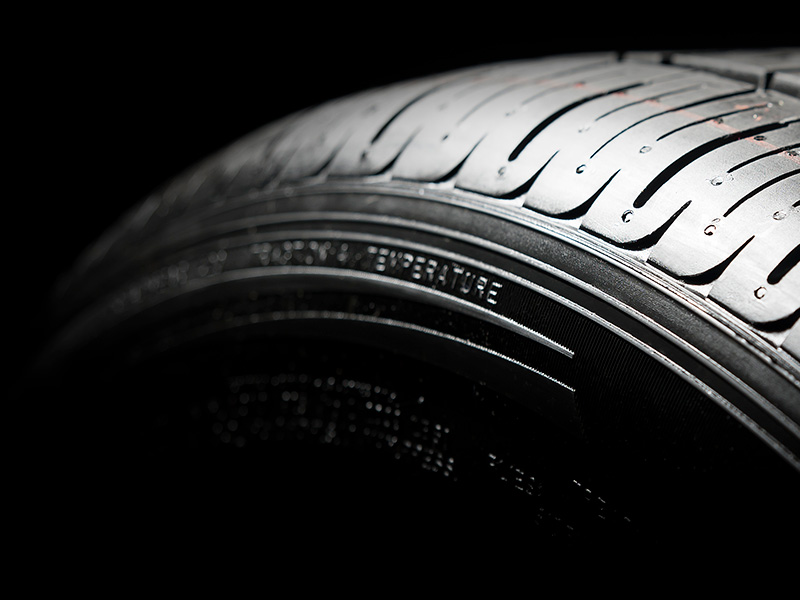Have you ever looked at the sidewall of a tire and wondered what those cryptic combinations of numbers and letters mean? You’re not alone. The UTQG rating, like ‘600 AB,’ might seem like a secret code, but it’s actually a key to unlocking the performance capabilities of your tires.
What Does UTQG 600 AB Mean?
UTQG 600 AB is a tire rating where ‘600’ represents the treadwear grade, indicating a longer-lasting tire, ‘A’ signifies the tire’s ability to stop on wet surfaces, and ‘B’ indicates its resistance to heat.
In this article, we decode the Uniform Tire Quality Grading (UTQG) system, focusing on the 600 AB rating as an example, to help you understand the critical metrics of treadwear, traction, and temperature in tires.
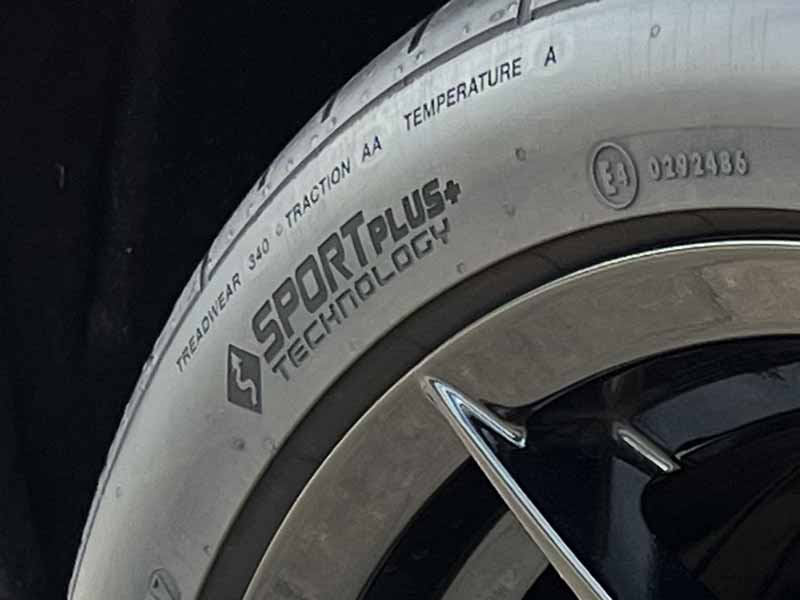
Understanding UTQG
UTQG stands for Uniform Tire Quality Grading, a system developed by the U.S. Department of Transportation to give consumers a consistent way of comparing tire performance. Think of it as a rating system that evaluates three critical aspects of a tire: Treadwear, Traction, and Temperature. Each aspect tells a story about how your tire will behave in different conditions.
For a deeper dive, check out our detailed explanation on What is UTQG?
The Three Pillars of UTQG
1. Treadwear
- What It Is: Treadwear is a relative measure of a tire’s wear rate. A higher number indicates a tire that may last longer under similar conditions.
- How It’s Measured: Treadwear is tested under controlled conditions on a government test track. If a tire has a treadwear grade of 100, it’s expected to last as long as the test tire. A grade of 200 means it’s expected to last twice as long.
- Practical Insight: A tire with a treadwear rating of 600, like our example, is expected to have a longer life span. Great for those who rack up miles but remember, actual tire life depends on several factors like driving habits and road conditions.
For more on what a good treadwear rating looks like, visit our guide on What is a Good Treadwear Rating?
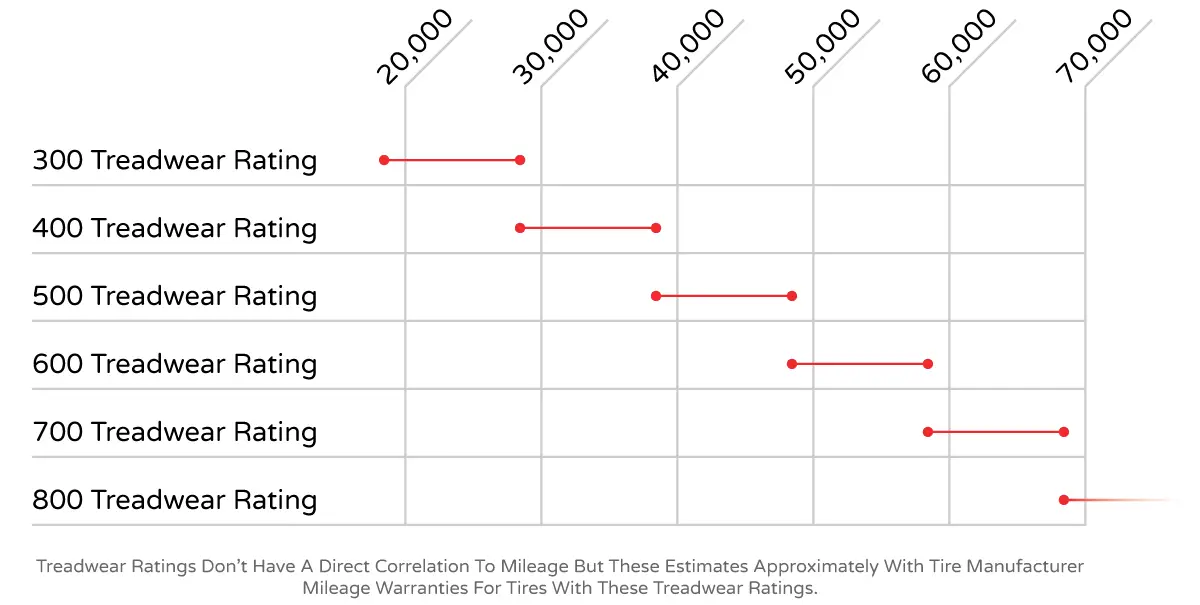
2. Traction
- What It Is: Traction rating indicates a tire’s ability to stop on wet pavement.
- How It’s Graded: It’s graded from highest to lowest as ‘AA’, ‘A’, ‘B’, and ‘C’. These ratings are based on controlled tests on wet surfaces.
- Real-World Relevance: Our example tire with an ‘A’ traction rating offers good traction performance. This rating is a key factor for those living in areas with frequent rain or slick road conditions.
Learn more about traction ratings at our detailed guide on What is a Good Tire Traction Rating?
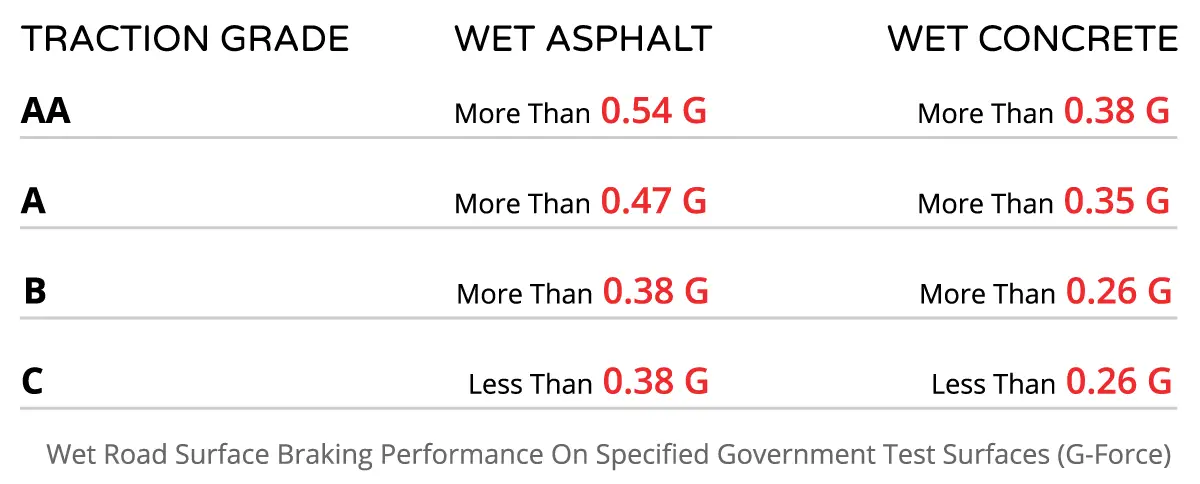
3. Temperature
- What It Means: The temperature grade assesses the tire’s resistance to heat buildup, with ‘A’ being the highest grade, followed by ‘B’ and ‘C’.
- Why It Matters: Excessive heat can accelerate tire degradation. This rating becomes crucial in hot climates or during high-speed driving.
- Contextualizing Our Example: A ‘B’ temperature rating, as seen in our 600 AB example, signifies good heat resistance. It’s a solid choice for everyday driving conditions but may not be ideal for extremely hot environments or aggressive, high-speed driving.
For a deeper understanding of temperature ratings, check out What is a Good Tire Temperature Rating?

Decoding the UTQG Rating: The ‘600 AB’ Breakdown
Now that you’re familiar with the basics of UTQG, let’s decode what a specific rating like ‘600 AB’ really means for your tires. This part is crucial because understanding these ratings can significantly impact your tire-buying decisions.
The ‘600’ in UTQG: Treadwear Rating
What Does ‘600’ Indicate?
- Durability Factor: The ‘600’ in our example is the treadwear rating. It’s a relative indicator of the tire’s potential lifespan compared to the standard test tire (rated at 100).
- Interpreting the Number: A rating of 600 suggests that the tire could last up to six times longer than the baseline test tire, assuming similar conditions.
Practical Takeaways:
- Expectations on Tire Life: If you’re a high-mileage driver or just want a tire that you won’t have to replace frequently, a treadwear rating of 600 is quite appealing.
- Balancing Act: Remember, higher treadwear might mean a harder compound, which could impact other performance aspects like traction.
The ‘A’ in UTQG: Traction Rating
Understanding ‘A’ Grade Traction
- Grip on Wet Surfaces: The ‘A’ rating represents the tire’s ability to stop on wet pavement.
- Higher the Better: While ‘AA’ is the top of the scale, an ‘A’ rating still indicates excellent wet traction capabilities.
Real-World Application:
- Safety in Wet Conditions: For drivers in areas with frequent rain or wet roads, a good traction rating is key to safe driving.
- A Balance of Performance: An ‘A’ traction rating is a good indicator for everyday driving, providing a safe and reliable grip in most conditions.
The ‘B’ in UTQG: Temperature Rating
What ‘B’ Means for Your Tires
- Heat Resistance: ‘B’ indicates the tire’s ability to dissipate heat under load. It’s a mid-range rating in the UTQG system.
- Heat and Speed: This rating is essential for those who drive in hot climates or at higher speeds, as it affects the tire’s overall durability and safety.
Considerations for Drivers:
- Suitable for Most Conditions: While it’s not the top rating (‘A’), ‘B’ is adequate for most everyday driving scenarios.
- Compromising for Comfort: If you’re not pushing your vehicle to high speeds on hot days, a ‘B’ rating will likely serve you well.
Ready to put this knowledge into practice? Check out our comprehensive Guide to Picking New Tires for more tailored advice on selecting the perfect tires for your vehicle.
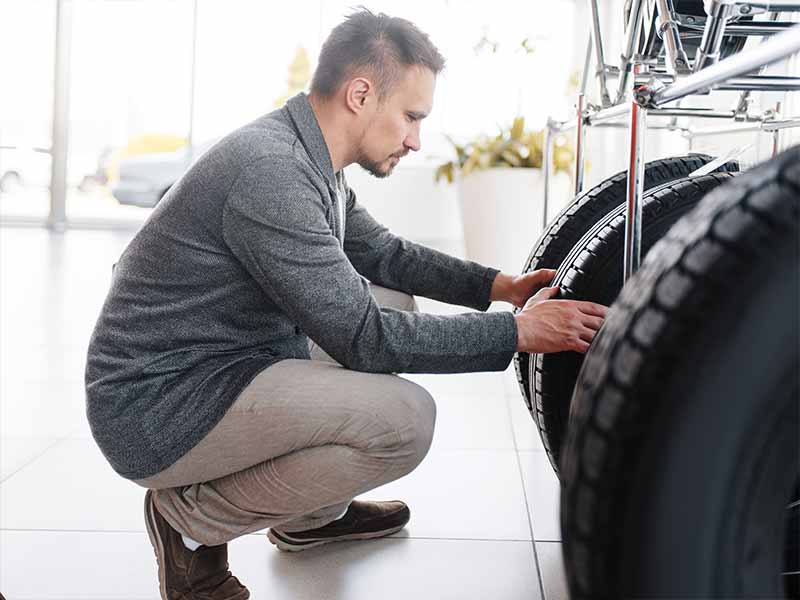
How to Use UTQG Ratings When Buying Tires
Understanding UTQG ratings is more than just deciphering numbers and letters; it’s about making informed choices for your vehicle’s tires.
Tailoring to Your Driving Needs
- Assess Your Driving Habits: Consider factors like your average mileage, driving conditions (city vs. highway), and the climate you drive in.
- Match Ratings to Requirements: If you often drive long distances, a higher treadwear rating like 600 would be ideal. For wet climate regions, prioritize a high traction rating.
Comparing Different Tires
- Use UTQG as a Benchmark: When looking at different tire options, compare their UTQG ratings to get a sense of their relative performance and longevity.
- Remember the Balance: A tire with an extremely high treadwear rating might compromise on traction or temperature resistance. Find the right balance for your specific needs.
Tips for Tire Buyers
- Research is Key: Spend some time understanding the different UTQG ratings and what they mean for your driving style.
- Consult Professionals: If in doubt, talk to a tire professional who can recommend tires based on your specific requirements.
- Read Reviews and Comparisons: Check out reviews and comparisons that include UTQG ratings to see how different tires perform in real-world conditions.

Common Misconceptions About UTQG Ratings
While UTQG ratings are invaluable tools in selecting tires, it’s crucial to understand their limitations and clear up common misconceptions. This section will help you gain a more nuanced view of UTQG, ensuring you make the most informed choices.
Not the Only Metric
- Broader Picture: UTQG ratings are helpful, but they aren’t the be-all and end-all. They should be part of a broader evaluation, including factors like ride comfort, noise levels, and handling.
Manufacturer Variability
- Different Standards: Treadwear ratings are based on each manufacturer’s testing, leading to variability. A 600 treadwear from one brand may not equal a 600 from another.
Subjective Nature
- Not Absolute: Ratings, especially for treadwear, can be subjective. They’re more of a guideline than a precise measurement.
Limitations of UTQG in Tire Evaluation
Traction and Temperature Ratings
- Limited Scope: Traction ratings only measure straight-line wet braking, not cornering or dry braking. Similarly, temperature ratings don’t account for all aspects of high-speed performance.
Environmental Factors
- Not Accounted For: UTQG ratings don’t consider variables like road surfaces, driving habits, or regional climate differences, all of which significantly impact tire performance.
Considering Other Factors Besides UTQG
Tire Reviews and Tests
- Real-World Insights: Look for professional tire tests and consumer reviews for a more comprehensive understanding of a tire’s performance.
Specific Needs
- Personalize Your Choice: Consider your specific needs, such as off-road driving, snow performance, or fuel efficiency, which UTQG doesn’t address.
Professional Advice
- Expert Recommendations: Don’t hesitate to seek advice from tire professionals who can provide recommendations based on your unique driving circumstances.
Using the UTQG Rating Chart
Navigating the world of tire ratings can be easier with the right tools. One such tool is the UTQG rating chart. This section will guide you on how to effectively use this chart to compare and select tires, making your tire shopping experience more informed and less daunting.
UTQG Rating Chart
| Treadwear | Traction | Temperature |
|---|---|---|
| 100 – 200 (Low) | C (Fair) | C (Moderate) |
| 201 – 400 (Moderate) | B (Good) | B (Good) |
| 401 – 600 (High) | A (Very Good) | A (High) |
| 600+ (Very High) | AA (Excellent) | — |
Understanding the UTQG Rating Chart
- What It Shows: The chart displays a range of UTQG ratings, categorizing tires based on Treadwear, Traction, and Temperature grades.
- Easy Comparison: It allows for quick comparison between different tire models and brands, highlighting their strengths and weaknesses in these key areas.
How to Use the Chart Effectively
Comparing Treadwear Ratings
- Longevity Focus: Look for higher numbers for longer-lasting tires. For example, a tire with a 600 treadwear rating is expected to last longer than one with a 400 rating, under similar conditions.
Assessing Traction Grades
- Safety in Wet Conditions: Pay attention to the traction grades, especially if you live in a wet climate. ‘AA’ and ‘A’ are top-performing tires in wet braking.
Evaluating Temperature Grades
- Heat Resistance: Check the temperature grades if you live in a hotter climate or frequently drive at high speeds. ‘A’ indicates the best heat resistance.
Tips for Using the Chart
- Balancing Act: Remember, no tire excels in all areas. A high treadwear tire might not have the best traction or temperature ratings, so balance these based on your needs.
- Quality Check: Use the chart as a starting point, but also research tire reviews and tests for a comprehensive understanding of their performance.
- Consult Experts: If the chart feels overwhelming, don’t hesitate to ask for assistance at a tire shop or from a professional.
Resources
Below are some links you may find helpful when learning about tires:
- Tire ratings explained – Consumer Reports
- How to read a tire sidewall – National Highway Traffic Safety Administration
Final Thoughts
Understanding the UTQG rating system not only gives you a deeper insight into the quality and performance of the tires but also ensures you make an informed decision that aligns with your driving habits and conditions.
Remember, while UTQG ratings are a great starting point, they should be considered alongside other factors like tire reviews, vehicle type, and personal driving needs. With the knowledge you’ve gained from this article, you’re now equipped to choose tires that offer the best combination of longevity, safety, and performance for your vehicle.
Good luck and happy motoring.
